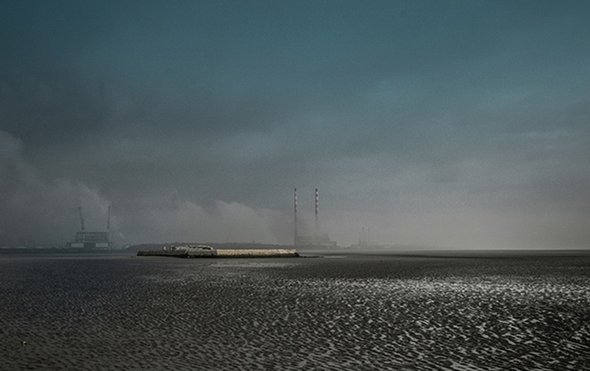Earth's CO2 Could Spike to a Level Not Seen Since the Dinosaurs

Here we go, An Arctic free of ice and stocked with swamp-loving reptiles. Restrained forests covering Antarctica, thriving on heat and temperature that kept them live through the dark months. Average temperatures along the equator of about hundred degrees Fahrenheit.
High CO2 levels kept the planet warm to sustain that life fifty million years ago during the Eocene Epoch. As the carbon dioxide levels dropped, the planet tilted toward a cooling, and the ice caps were formed, choking off the life that once thrived at the poles.
Now, humanity’s consumption of fossil fuels is pushing the planet toward the carbon dioxide levels of the period when dinosaurs roamed the Earth. And that’s the rosier scenario for two hundred years from now, a new study has found.
By 2300, there would be little precedent for the transformation of the Earth. That’s because humanity’s billowing of carbon dioxide into the atmosphere, chiefly through the consumption of fossil fuels, may be on track in a few centuries to hit a level not seen in 4 hundred and twenty million years, according to the found published yesterday in NC(Nature Communication).
Researchers are still trying to figure out what that might be the meaning for life on Earth.
“As far as we can say - the Earth hasn’t experienced that in the last 4 hundred and twenty million years. How the Earth will react,if there is no example in the geological record - said Gavin Foster, author of the study and a professor of isotope geochemistry at the University of Southampton in England.
The amount of atmospheric carbon dioxide has already increased in the last two centuries at a rate not seen in the geologic record, Foster said. Scientists believe the carbon dioxide levels now in the atmosphere haven’t been seen in 3 million years. And the planet is warming as a result of the boom in carbon dioxide from industrialization, almost 2 degrees Fahrenheit in the last 150 years.
What’s more, the Earth has set high temperature records for each of the last three years and triggered a melting of the Arctic that scientists fear is already past the tipping point.
30% carbon dioxide GROWTH SINCE 1960
Other researchers and Foster used the geologic record to determine previous levels of atmospheric carbon dioxide and to project possible scenarios for future warming if carbon dioxide levels hit 2 thousands parts per million in the next 2 hundred years. They examined plant fossils, soil and ocean carbons and the composition of fossil shells. In total, they examined 12 hundred estimates of ancient atmospheric carbon dioxide concentrations.
The amount of atmospheric carbon dioxide is set to top 410 ppm this year, researchers have found. Last month, the NOAA (National Oceanic and Atmospheric Administration) announced that global carbon emissions have been measured at an all-time high. The carbon dioxide measured at the Mauna Loa Baseline Atmospheric Observatory in Hawaii hit 405.1 ppm last year. That’s an increase of 3 ppm and makes five consecutive years of carbon dioxide increases of at least 2 ppm, an unprecedented rate of growth, according to NOAA.
Since 1960, carbon dioxide has increased more than 30 percent, or 100 ppm. Before the age of industrialization, or about 150 years ago, the amount of atmospheric carbon dioxide was 280 ppm. The amount of atmospheric carbon dioxide had remained at 280 ppm since about 10 thousands years ago.
Even if carbon dioxide levels reach the same rate they hit millions of years ago, there is no clear way to determine how the planet would react, said Dan Lunt, a professor of climate science at the University of Bristol in England and a co-author of the study. For 1 thing, since the sun is more brighter now, it would be a great contributor to warming, Lunt said.
“Due to nuclear reactions in stars, like our sun, over time they become brighter,” he said. “This means that, although carbon dioxide concentrations were high 100 of millions of years ago, the net warming effect of carbon dioxide and sunlight was less.”
The study examines a probable scenario based on present emissions levels and the geological record but still remains a lot of ambivalence, Foster cautioned. He said the record-high levels of carbon dioxide are based on the assumption that humanity will eventually burn its way through all of the available fossil fuels. In addition, the geologic record doesn’t always capture rapid changes that occur over a few hundred years, so it’s impossible to be entirely certain that there was a sudden spike in carbon dioxide levels at some point in geologic history that was not in the record, Foster said.
Still, researchers are more certain that the spike in carbon dioxide levels means life would have to adapt to a more extreme heat than anything humanity has ever experienced, he said.
“It’s a level of forcing that has not been experienced by the Earth, as far as we can tell,” he said, adding, “It puts the enormity of what we’re doing in context.”
Reprinted from Climatewire with permission from E & E(Energy and Environment) News. E & E provides daily coverage of essential energy and environmental news at www.eenews.net.
Congratulations @sunny5240! You have completed some achievement on Steemit and have been rewarded with new badge(s) :
Click on any badge to view your own Board of Honor on SteemitBoard.
For more information about SteemitBoard, click here
If you no longer want to receive notifications, reply to this comment with the word
STOP